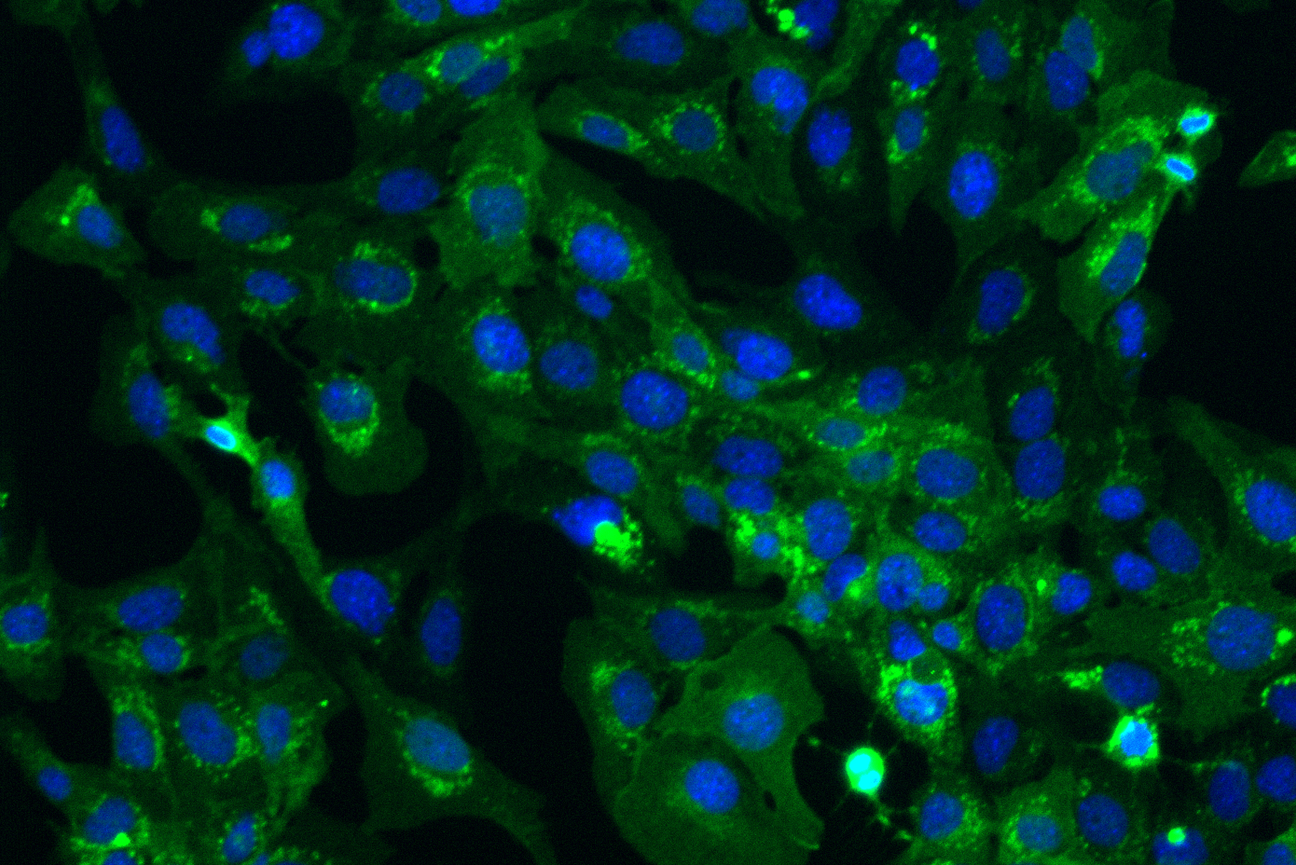
Whitehead Institute postdoc Punam Bisht turned bat stem cells into different cell types that are affected by SARS-CoV-2 (fibroblasts are seen here with nuclei in blue). She also edited bat cells to contain the human ACE2 receptor (seen here in green), which SARS-CoV-2 uses as an entry point to infect cells. Using these bat cells, Bisht has been getting a closer look at how SARS-CoV-2 infects cells and how bat cells prevent the virus from taking over.
Punam Bisht/Whitehead Institute
Unusual Labmates: Bats
Bats have fascinating biological properties. These include resistance to cancer; long life spans relative to their body size; extreme cold tolerance; and tolerance of viruses: they carry many viruses harmful to humans, and yet often suffer few if any symptoms. In spite of these fascinating characteristics, bats have not been used in much biomedical research, because they are not easy to keep or study in the lab.
Click here to view the latest multimedia piece in the Unusual Labmates series and learn more about how an innovation made studying bat biology in depth possible and how researchers at Whitehead Institute have made use of bat biology to study questions about viral infection, immunity, cold tolerance, and more.
Topics
Contact
Communications and Public Affairs
Phone: 617-452-4630
Email: newsroom@wi.mit.edu


